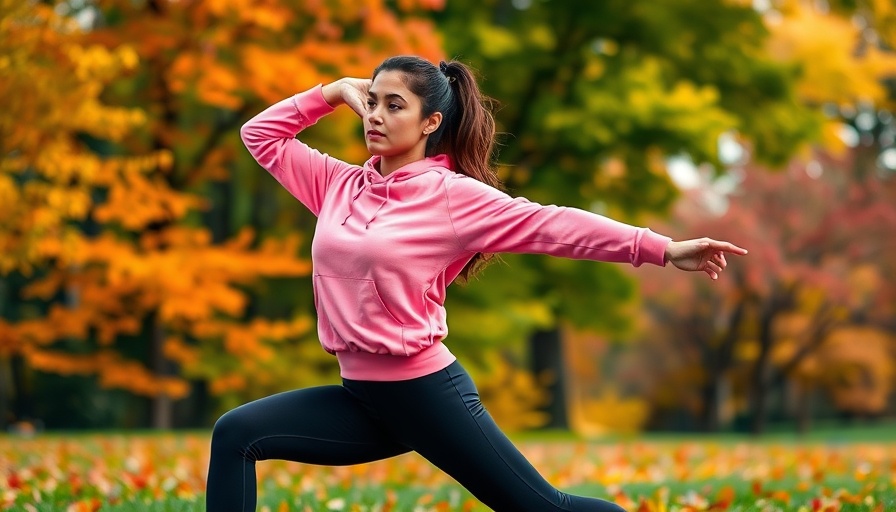
Yoga: A Natural Ally in Diabetes Management
Maintaining stable blood sugar levels is paramount for individuals managing diabetes. While medication and dietary measures are foundational pillars of diabetes management, the integration of physical activities such as yoga can bring additional benefits. Unlike more conventional exercises, yoga focuses on not only movement but also breath control and mindfulness, making it an ideal component in a holistic approach to wellness.
Understanding the Benefits of Yoga
The connection between yoga and diabetes is both intriguing and beneficial. According to various health studies, including insights from the Journal of Ayurveda and Integrated Medical Sciences, yoga serves as a multifaceted tool in managing diabetes. Let's unpack the main benefits of incorporating yoga into a diabetes care plan:
- Stress Reduction: High stress levels can lead to insulin resistance and increased blood sugar levels. Yoga poses and meditation encourage relaxation, which in turn can help maintain a balanced hormonal environment.
- Improved Circulation: Enhanced blood flow, particularly through poses that involve stretching and holding, aids in better glucose regulation by promoting effective circulation across bodily systems.
- Mindfulness and Healthier Choices: The mindfulness practice inherent in yoga encourages participants to reflect on their body’s needs, leading to healthier food choices and lifestyle decisions essential for managing diabetes effectively.
- Strength and Flexibility: Regular yoga practice not only boosts strength but also enhances flexibility, making it easier for individuals to engage in various physical activities, which is vital for overall health.
7 Simple Yoga Poses to Stabilize Blood Sugar Levels
Now that we understand the holistic benefits of yoga, let’s explore seven simple poses that anyone, from beginners to experienced practitioners, can do to support blood sugar management:
1. Mountain Pose (Tadasana)
Benefits: Enhances posture and balance while grounding your energy.
How to do it: Stand tall with feet together or hip-width apart, distribute weight evenly, engage thighs, lift the chest, and extend arms alongside your body. Hold for 30 seconds while breathing deeply.
2. Downward-Facing Dog (Adho Mukha Svanasana)
Benefits: Increases blood flow and strengthens the body.
How to do it: Start on hands and knees, tuck toes, and lift hips to form an inverted V-shape. Hold for 30 seconds while breathing deeply.
3. Warrior II (Virabhadrasana II)
Benefits: Builds strength and stamina while promoting focus and determination.
How to do it: Stand with feet wide apart and bend front knee, arms stretched out at shoulder height. Hold for 30 seconds, focusing on your breathing.
4. Seated Forward Bend (Paschimottanasana)
Benefits: Calms the mind and stretches the spine, promoting relaxation.
How to do it: Sit with legs straight, inhale and extend arms up, then exhale and bend forward, reaching towards your toes. Hold the position for five breaths.
5. Bridge Pose (Setu Bandhasana)
Benefits: Strengthens the back and opens the chest, encouraging deep breathing.
How to do it: Lie on your back, bend your knees, and place feet hip-width apart. Lift hips while pressing arms down. Hold for 30 seconds.
6. Cat-Cow Stretch (Marjaryasana-Bitilasana)
Benefits: Improves spinal flexibility and encourages mindfulness.
How to do it: Start on hands and knees, alternate arching the back (cat pose) and dropping the belly down while lifting your head (cow pose). Repeat for several breaths.
7. Child's Pose (Balasana)
Benefits: Restores energy and relieves tension in the body.
How to do it: Kneel on the mat, lower your torso between your knees and stretch your arms forward. Hold for several breaths, focusing on relaxing.
The Importance of Consistency
Yoga is not just about performing these poses; it’s about creating a routine that encourages consistent practice. Engaging in these movements regularly can enhance their benefits on blood sugar control, promote body awareness, and reduce stress levels. Many who are committed to their yoga practice report not only improvements in their sugar levels but also enhanced emotional resilience.
Conclusion: Taking the Next Step
Incorporating yoga into your daily routine can significantly impact your diabetes management and overall fitness. Consider joining a local class or following online sessions to build a sustainable practice. By utilizing these simple poses, you are not only taking control of your health but also investing in your well-being. Take action today – step onto your mat and begin your journey toward better blood sugar management!
 Add Row
Add Row  Add
Add 




Write A Comment